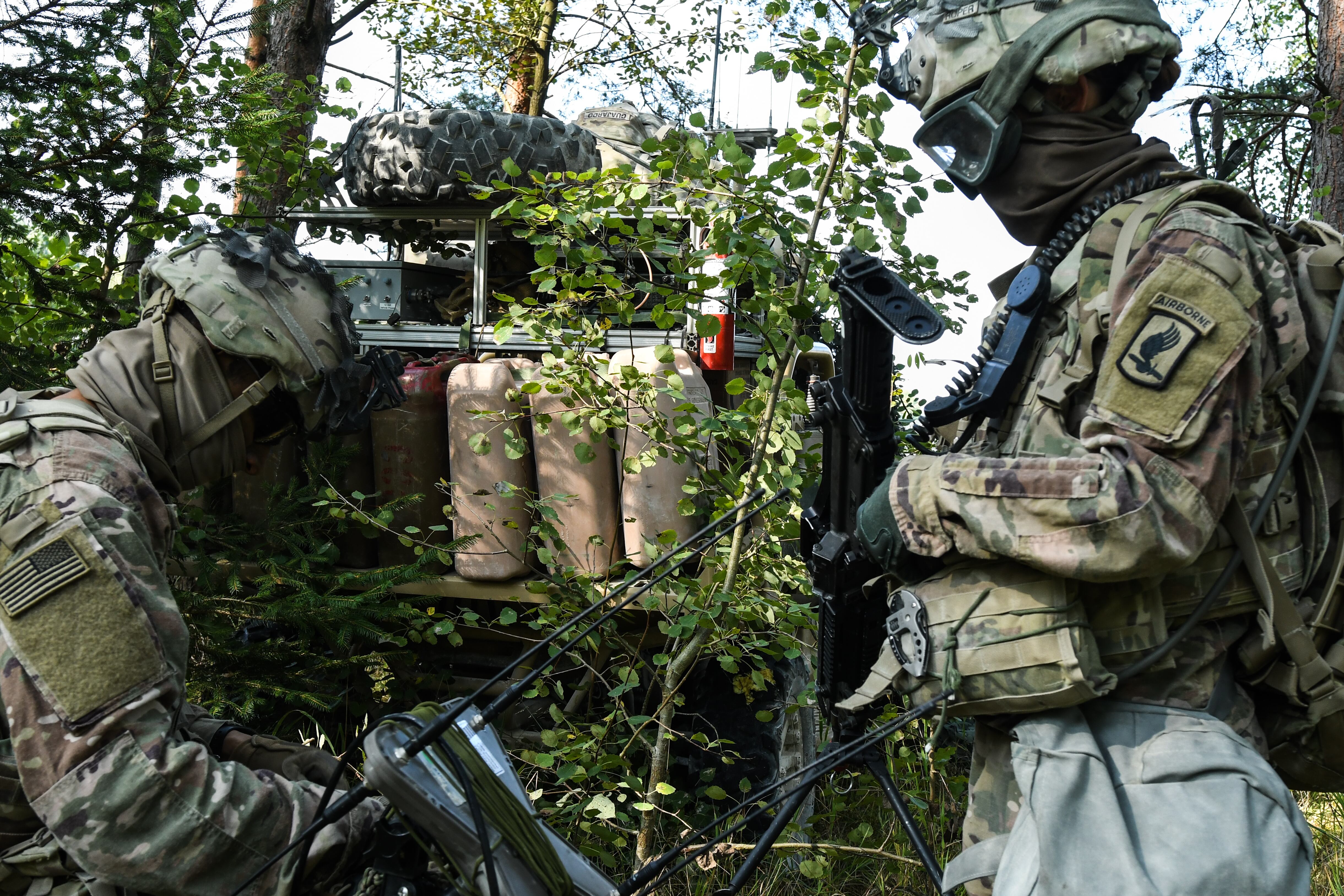WASHINGTON — The U.S. military must better integrate electromagnetic spectrum operations throughout its ranks to succeed against near-peer adversaries, rather than relegate the capabilities to a niche specialty, a panel of experts told Congress.
America’s adversaries have paid close attention to how the U.S. fought in the last 30 years and significantly invested in technological solutions to disrupt communications and create confusion among units.
“While the United States focused on counterterrorism operations over the last 20-plus years, China and Russia were working to advance their peer-to-peer military capabilities. That includes the [electromagnetic] spectrum operations,” Joseph Kirschbaum, director of defense capabilities and management at the Government Accountability Office, said at March 19 hearing before the House Armed Services Subcommittee on Cyber, Innovative Technologies and Information Systems.
The U.S., however, has not maintained this pace in kind, creating a capability gap relative to top enemies.
Experts told members that the electromagnetic spectrum is a strategic asset that can prove decisive at all levels of conflict, especially right now in what officials call “competition,” or operations below the threshold of armed conflict.
The U.S. has maintained electromagnetic warfare and spectrum management as capabilities to achieve a tactical outcome, said Bill Conley, formerly the Department of Defense’s electronic warfare guru, noting this is not how China has organized its military.
Rather, China created the Strategic Support Force in 2015, which equally links electronic warfare, cyberspace operations and space, elevating them in strategic importance.
The combination is critically important to Chinese operations, said Conley, who is now at Mercury Systems. “What they have achieved operationally is really pretty darn impressive.”
Kirschbaum equated the U.S. posture to electromagnetic warfare to 1914 when armies segregated the machine gun to specialized units, only using them where needed.
However, it didn’t take long to realize the entire force needed these new weapons for tactical operations. The German force did just that with its machine guns, gaining an immediate advantage.
“Right now, we’re kind of marching off the 1914: We think of these spectrum operations as enablers for existing operations, and in a lot of ways we still treat them that way. They’re not as integrated as they need to be throughout the force,” Kirschbaum said. “That’s the hump we need to get over.”
Commanders’ ability to maneuver their forces in and through the electromagnetic spectrum freely in a coordinated manner could be one of the best enduring strategic offensive advantages for the U.S., Conley said.
However, the U.S. risks failing to realize this superiority because of a lack of governance over previous electromagnetic strategies and initiatives.
“We found that DoD had not fully implemented either the 2013 or 2017 strategies. This was not because they were bad strategies … but rather because of bureaucratic and organizational hindrances,” said Kirschbaum, who lead a December 2020 GAO report on such shortfalls. “Specifically, DoD did not take action to develop detailed implementation plans.”
The DoD published an updated strategy in October, but did not accompany it with an implementation plan, instead opting to iron it out later, setting a self-imposed deadline of 180 days to do so, which puts the timeline sometime this month.
Conley offered that the U.S. should focus its strategic attention as a nation toward innovation, technological development, and integration into military tactics and operations.
“This is a dramatic departure from our platform and program-centric legacy investment strategy that we have pursued,” he said. “Electromagnetic battle management, the dynamic reconfiguration of our sensors, of our networks, as well as our electromagnetic attacks in real time may become the preferred way to achieve power projection when compared to the defensive utilization of the electromagnetic spectrum … instead of viewing capability gaps and shortfalls, [electromagnetic spectrum operations] can actually create opportunities for us.”
Mark Pomerleau is a reporter for C4ISRNET, covering information warfare and cyberspace.








